April 9, 2019. New York City, New York, to Charleston, South Carolina, USA.
We got the subway from Manhattan and then connected to the Skytrain. This took us into JFK for our flight to Charleston, the starting point for our trip across the US.
It was a long trip but better than a taxi or driving.
I was surprised that the long term car park at JFK was practically empty. Obviously the people of New York would rather take public transport to the airport than drive.
I am sure the same would apply to the people of Melbourne – if only we could convince a government, of any persuasion, to build a train line to Tullamarine.
We planned to pick up a rental car Charleston and drive from the east coast to the west, via the southern states.
We had done the reverse trip, across the northern US and Canada, back in 2015.
As we checked into our motel in Charleston, it started to rain.

April 10, 2019. Charleston, South Carolina, USA.
Charleston was founded in 1670 and originally known as Charles Town in honour of King Charles II of England (1630-1685).
In 1783, after the Revolutionary War, it was renamed as Charleston.
The city played a major part in the slave trade, which resulted in its size and wealth. Nearly half the Africans transported to America arrived in Charleston. It was the only major antebellum (before the Civil War) American city to have a majority-enslaved population.
In 1860 the population of Charleston was over 700,000, 57% were slaves, owned by just 26,000 white Americans.
In fact the reliance on slaves, who were controlled by an oligarchy of white planters and merchants, was a big factor that lead to the start of the Civil War in 1861.
The temperatures were going to be in the twenties, so I put on shorts for the first time in the trip.
We found City Lights Coffee for breakfast. It was owned and run by a South African, whose accent seemed as much out of place in the South as ours was.
We then visited the Charleston City Market, which was originally established in the 1790s. The architecture of the market hall is in the Greek Revival style. It stretches back from, Meeting Street, for four city blocks. It was originally a beef and produce market but these days there is more money in tourists, so souvenirs and art occupied the market stalls.
I bought a new foldable Broner hat from the Charleston Hat Man, who has had a stall in the market for over 35 years.
Our hotel was in the Charleston Historical District, just down the road from the market, so we spent the day exploring the old area of the peninsula.
We walked all the way down to White Point Gardens at the end of the peninsula and then zigzagged back. The gardens were originally built in the 1800s’ and are at the confluence of the Ashley, Cooper and Wando Rivers.
An initial search of the area on Google, indicated that there were a number of brew pubs around us.
This wasn’t the case.
They either didn’t exist or had gone out of business.
We eventually found the Swig and Swine for dinner which was ok, but certainly not a brew pub.

April 11, 2019. Charleston, South Carolina, USA.
A visit to Fort Sumter gave us an excellent history lesson on the American Civil War.
To get there we sailed on the Spirit of the Lowcountry, a faux paddle steamer. This was a two and a half hour round trip. Most of the time was spent on the water with less than an hour on the island. However that was fine, as it was rather small.
The Battle of Fort Sumter heralded the start of the American Civil War.
In 1861 the South Carolina Militia bombarded the fort, resulting in the surrender of the United States Army. Ironically there were no casualties.
This followed the declaration of secession by South Carolina in 1860.
Earlier in 1860 six more Southern states adopted a similar ordinance of secession. They then, as a group, adopted a provisional constitution for the Confederate States of America.
The fort was besieged for nearly four years and eventually abandoned, just prior to the capture of Charleston in 1865.
Fort Sumter, built between 1812 and 1815, dominates the entrance to Charleston Harbour and was designed to be one of world’s strongest fortresses. It is only 2.4 acres in area and was built to hold 650 soldiers and 135 pieces of artillery.
There’s not much left of it now.

April 12, 2019. Charleston, South Carolina to Savannah, Georgia, USA.
After checking out of our motel we got an Uber to pick up our Avis rental, a black Jeep Compass. It was relatively new, with just 10,000 miles (16,000 kilometres) on the clock.
Our first stop was at Magnolia Plantation and Gardens.
First built by Thomas and Ann Drayton in 1676, it is one of the oldest plantations in the South. It originally grew rice and had extensive dikes, dams and irrigation. The first slaves in the Magnolia Plantation, were shipped from Barbados in 1670, by the Drayton family.
The slave trade and slavery, within the tourist South, is a subject that is not really talked about. It’s too easy to forget that these magnificent homes, gardens and plantations were built on the backs of Africans who were dragged from their homeland and brutally forced to work for white property owners.
You rarely hear the slaves’ side of history – everything is whitewashed, pardon the pun.
Today the gardens are the big tourist attraction. They were developed in the 1840s by the Reverend John Grimke-Drayton.
Grimke-Drayton, an Episcopal minister, had the gardens redesigned from an informal European style to the more formal English style. According to legend, this was done to help lure his bride south from Philadelphia.
As an interesting aside we read that the white Christians believed the disease that ravaged the American Indians was a gift of God, that made more room for them.
Don’t you just love White Supremacists.
We left Magnolia Plantation and Gardens and drove straight to Savannah, leaving just enough time for a brief wander around the historical district before dinner.
Established in 1733 Savannah is the oldest city in Georgia and today still largely maintains the original town plan.
Being situated on the Savannah River, the city is an important Atlantic seaport. This is celebrated by a rather strange sculpture of Florence Martus (1869-1943). Also known as Savannah’s Waving Girl. Between 1887 and 1931 Florence would wave to all incoming ships and became the unofficial greeter of all ships arriving in Savannah.

April 13, 2019. Savannah to Atlanta, Georgia, USA.
This was the first longish drive on our road trip. The drive wasn’t the problem but finding a good coffee was.
Thea eventually found My Coffee Shop in Dublin, which was about half way between Savannah and Atlanta.
The cafe and the town were empty but the coffee was good.
They served Lavazza coffee, an Italian brand that was founded in 1895 by Luigi Lavazza. They are the market leader in Italy, so they must know something about roasting coffee.
That evening we walked into Midtown Atlanta for dinner and very soon realised that it was a special night.
The streets were crowded with young people and they were all dressed up – it was ‘Prom Night’.
Our restaurant was right over the road from one of the prom venues. We watched as the high school students, dressed in their finest, were dropped off and lined up to enter.
Interestingly there was a heavy police presence and everyone was searched before entering.

April 14, 2019. Atlanta, Georgia, USA.
In the morning we walked the few blocks from our hotel to the Centre for Puppetry Arts.
This is one of the few puppetry museums in the world. It was opened in 1978, where Kermit the Frog and his creator, Jim Henson cut the ceremonial ribbon.
Jim Henson (1937-1990) and his characters are certainly featured heavily in the museum.
Jim is best known for creating the Muppets and his work on Sesame Street (1969 to present) the American educational TV program, that uses many Muppet characters.
The exhibitions were designed in three parts and are certainly created with kids in mind.
Naturally, the first part was the Jim Henson Collection. This was followed by the Global Collection, showcasing the world of puppetry from a more historical view point.
The final section of the exhibition was the World of Myth and Magic, heavily featuring The Dark Crystal (1982) and Labyrinth (1986), both of which were directed by Jim Henson.
It was a Sunday, so in the afternoon we walked to Piedmont Park, which was full of families making the most of the pleasant weather.

April 15, 2019. Atlanta, Georgia to Nashville, Tennessee, USA.
The previous day we found Dancing Goats for breakfast. It was a rather hipster coffee bar with a good food selection so we returned on Monday, before leaving Atlanta for Nashville.
The place was an ‘office’, full of single people on their computers.
There were only 10 seats available to people who actually wanted to talk to each other, the rest were benches.
Surprisingly, not everyone in the place was under 30.
Later in the afternoon we stopped at Velo Coffee Roasters in Chattanooga and it was the same deal. Even though this was, as the name suggests, a roasting house, everyone was on their computers.
Worldwide cafes that encourage their space to be used as an office are regarded as legitimate ‘Shared Work Space’.
When I looked around, one more time, I discovered there was one person actually reading a book.
Once in Nashville we did a bit of housekeeping, got some clothes washed then caught an Uber into town.
In Nashville I had found a local brew pub that looked promising for dinner. However once we were there we discovered that something rather ‘Big’ was going down in the town.
Atlanta and now Nashville, this is becoming a habit.
The stages were being set up for the NFL Path to the Draft. Which I believe is a live telecast, over a number of nights and has something to do with the selection of new players for the NFL teams.
I have no concept of American football, either how it’s played or how the competition runs. This also goes for how new players are selected for the different teams within the competition.
But apparently this is really a big deal and it was being held in Nashville, so the community welcomed them with open arms.
Below is how NFL Media describes the event:
“Watch the NFL’s stars of tomorrow take the stage, live from Nashville, TN at the 2019 NFL Draft live on NFL Network, ESPN and ABC. We go behind the scenes and inside the war rooms to bring you an all access pass to the 2019 NFL Draft.”
The brew pub, Rock Bottom Restaurant and Brewery, was in the heart of Nashville’s downtown and right next door to the area that was being set up for the draft draw.
The beer was great and the food was also very good.

April 16, 2019. Nashville, Tennessee, USA.
Our first tourist stop for the day was to visit the Nashville Parthenon in Centennial Park. Luckily Three Brothers Coffee shop was just around the corner, so we naturally went there first.
The Nashville Parthenon was constructed in 1878, for the Tennessee Centennial Exhibition. It’s a few years younger than it’s counterpart in Athens, that was built in 447 BC.
It’s a full scale replica of its Greek counterpart and, unlike the one in Athens, has a statue of the Goddess Athena on display in the interior.
However this Athena looks more Thai than Greek.
Nashville has been known as the Athens of the South and this probably influenced the powers that be to build this rather strange edifice.
There were a number of building constructed for the exhibition, that were in the classical style, however this is the only one that remains in Nashville.
It was so popular with the locals that they decided to keep it after the exhibition ended.
After our classical interlude we headed to something a bit more in keeping with Nashville, the Country Music Hall of Fame.
This is one of the world’s largest museums dedicated to the preservation and interpretation of American vernacular music.
The original Hall of Fame was built in 1967. It’s popularity grew and in 2001 the museum moved to it’s current location in the heart of downtown Nashville.
The main exhibition, Sing Me back Home, is a journey through country music. There are nearly 200,000 sound recordings, 500,000 photos and 30,000 moving images. Plus instruments, clothing, scrapbooks and even iconic vehicles like Elvis Presley’s 1960 Solid Gold Cadillac.
Even the architecture of the Country Music Hall of Fame symbolically reflects country music. Some of the building’s elements represent musical notes, drums, piano keys and even the tail fin of a 1959 Cadillac.
In the evening we stopped at Doc Holliday’s Saloon for a drink and some live, Nashville Country and Western music.
That night we returned to the Rock Bottom Restaurant and Brewery.
The food and beer was still good and work was progressing well on the Path to the Draft stage.

April 17, 2019. Nashville to Memphis, Tennessee, USA.
“When you’re onto a good thing…” as they say, so it was back to Three Brothers Coffee again.
The brew was good and it was also on the way to Memphis.
We arrived in Memphis mid afternoon and, fittingly, we were staying on Elvis Presley Boulevard.
This was just down the road from Graceland, which we immediately visited.
Graceland was Elvis’s home for twenty years.
The Graceland farm was originally owned by a printer, Stephen C Toof and was named after his daughter, Grace.
The house was built by her niece, Ruth Moore and her husband Thomas Moore in 1939. It’s a Colonial Revival style mansion of 10,266 square feet (953.7 square metres). It has 23 rooms in total, with eight bedrooms and bathrooms.
In 1957 Presley purchased Graceland for himself and his parents. After Elvis’s death in 1977 his father, Vernon, took over the estate. Then when he died in 1979 Priscilla, Elvis’s estranged wife, became the estate’s executor on behalf of their daughter, Lisa Marie.
Poor management meant that the Presley estate owned a lot of money. Priscilla then decided that the best strategy would be to turn Graceland into a money spinner. As a result Graceland became a museum in 1982. With over 500,000 visitors a year it’s the second-most visited home in the US, next to the White House in Washington DC.
The house has been left as it was during the time that Elvis lived there – and it’s all very kitsch.
It’s a very sanitised testament to his life, omitting the drugs, mental issues and obesity that were part of his demise.
Born in 1935 Elvis became one of the iconic figures of the 20th century music scene. He was known as ‘The King of Rock and Roll’ or simply, ‘The King.’
He had no musical training and couldn’t read music, playing everything by ear. Today he is still the best-selling solo artist in the history of recorded music.
That night we had dinner at Marlowe’s Ribs and Restaurant. Partly because it offered a shuttle service from our hotel and, more importantly, it was local food.
We shared some ribs – they were great, but all the sides were overdone.
The corn fritters were stuffed with cheese, the beans cooked in pig fat and the slaw was drowned in mayonnaise.

April 18, 2019. Memphis, Tennessee, USA.
After breakfast our intention was to go to Java Cabana for coffee and then onto the National Civil Rights Museum.
However Java Cabana was shut for renovations. Luckily we found another cafe, just around the corner. It wasn’t as eclectic as our first choice appeared on Google but the coffee was ok.
The National Civil Rights Museum is housed in the Lorraine Motel, the place where Martin Luther King Jr. was assassinated in 1968.
The motel was originally built around 1925 and in 1945 it was purchased by Walter Bailey who turned it into an upscale accommodation for black clients. This was during the era of segregation in the South and many well known guests, such as Ray Charles, Aretha Franklin, Otis Redding and Wilson Picket, stayed there.
They were barred from staying in the mainstream hotels.
The museum was opened in 1991 and now incorporates a number of other buildings, besides the Lorraine Motel. Buildings that were also associated with the assassination of King.
The primary thrust of the museum traces the Civil Rights Movement in the United States from the 17th century to the present day.
The first exhibition was photography by Andrew Feiler, taken at Morris Brown College. This abandoned Black College was part of the Historically Black Colleges and Universities of the South (HBCUs)
No photos were allowed here.
The rest of the museum chronicles the civil rights struggle in the US – it’s a very sad and sorry tale.
By the time of the Civil War (1860) there were nearly 4 million slaves in America. They were worth around $10 Trillion to the economy, in today’s money. In fact at this stage in their history America’s economy was reliant on slavery.
The South played a vital role, as tobacco, rice, cotton, sugar and rum were the staples of production. Therefore the Southern States had a very vested interest in promoting slavery and keeping it viable for as long as possible.
Slavery lasted in America for nearly 200 years. However it wasn’t just slavery that was the issue. Over 3,000 African Americans died from lynching between 1890 and 1930. Even today black lives don’t really seem to matter.
Perceived threats to the economy and push for more equal rights from the North led to the creation of the Jim Crow Laws. Developed by the Southern States as a compromise to the North, they promoted the concept of Separate but Equal, for Negros.
This in effect meant more segregation, with one rule for Whites and another for African Americans.
The Lorraine Motel tour ends in room 306, the room that Martin Luther King Jr. was staying in prior to his assassination.
Martin Luther King Jr. (1929-1968) was a Baptist minister and Civil Rights activist.
In 1964 he won the Nobel Peace Prize for advocating racial equality through nonviolent resistance. From 1963 onwards he was targeted, as a radical, by the FBI’s J Edgar Hoover and investigated for possible communist ties.
From the Lorraine Motel you cross over the road to the boarding house, where James Earl Ray shot King.
As with the assassination of President John F Kennedy in 1963, there were many conspiracies and this part of the museum explores them all.
An oddity about African Americans is that Christianity played an important part in their culture within America. The missionaries, zealots and slave owners turned them away from their traditional African beliefs and saw to their conversion. This faith was used to control them but it also bonded them and helped them in their struggle for equality through people like King.
Unfortunately a quest that is still ongoing.
Memphis will go down as one of our worst US hospitality experiences.
The management of the hotel and the two restaurants we visited are to blame.
If the staff don’t know what is expected of them, how can they deliver a service.
At Delta’s Kitchen I quizzed our young waiter about his training. This was after asking for a beer list and finding that he had no clue about what they served.
He told me that he had only been there a couple of weeks and that the person training him had left a few days after he joined. That person had never been replaced and therefore our waiter had received no more training.
How can management, with any integrity, send wait staff out to serve their customers and expect them to get a tip without proper training.
The other staff at Deltas Restaurant were disinterested in serving their customers. So much so that several other tables, all Americans, commented on how poor the service was.

April 19, 2019. Memphis, Tennessee to Natchez, Mississippi, USA.
We drove to Natchez, via the Natchez Trace Parkway, which was originally a trade route from the north. This gave us an opportunity to drive on something other than freeways.
Which was a green and pleasant change.
We have used the Parkways before. These are two lane roads that mainly travel through national parks.
Natchez is the oldest established city on the Mississippi and we were staying in the Antebellum Mansion, an 1840 colonial home.
All the rooms were named after famous southerners and we were in the John R Lynch Room.
Lynch was born into slavery in 1847 and became one of the strongest African American voices in post-Civil War America.
After the long drive a quick drink at the Natchez Brewing Company was welcome.
We were going to stay there for dinner but there wasn’t any.
This was a brew pub in the old tradition.
Brewery and warehouse by day and a bar in the evenings and at the weekend.
And like the brewpubs of old they only served beer, so Thea was forced to stomach a Wheat-beer Sour.
She wasn’t that impressed.
The interior was all very industrial and we were surrounded by brewing equipment and barrels.
We then went back to the hotel for a meal.
The menu was a strange fusion of eastern Mediterranean and Southern cooking.
Again the service was a disaster.
We hadn’t finished our entree and the main course arrived.
We hadn’t finished our meal and the bill arrived.
On so many levels the owners of these restaurants are immoral.
They don’t pay their staff enough to live on and expect them to make up the difference with tips.
Yet they don’t train them well enough to earn the 18-30% that they need to survive.
The repercussions of this laxness effects every member of the staff, as they all take and need, a share of that tip.

April 20, 2019. Natchez, Mississippi to New Orleans, Louisiana, USA.
For two reasons good coffee was hard to find in Natchez.
Firstly there were very few places serving it and secondly, when we did eventually discover Steampunk Coffee Roasters, it was almost impossible to reach. Two power poles were lying at an odd angle over the road, with emergency workers blocking our path. This meant we had to negotiate the Natchez one way street system to get there.
This took us at least four goes.
We arrived in New Orleans late in the afternoon and, after checking into our hotel, went exploring the city.
The hotel was in the Commercial District and very close to the French Quarter, home to the famous Bourbon Street.
Bourbon Street is like a long, narrow, three ring circus, if that’s possible. It’s full of weirdness, with both the performers and the audience dressed to impress. Some in the most inappropriate attire I have every seen.
There are also performing animals. birds, dogs and reptiles, all adding to the circus feel.
After time in ´Freak Street’ we wandered down to the banks of the Mississippi. Here it was slightly calmer.
There we found the Crescent City Brewhouse, which is situated in a property that was originally built in 1722 and later rebuilt after the fire of 1794.
Opened in 1991, it’s the the oldest craft brewery in New Orleans and the first brewpub to be established in the city.
They pride themselves on their adherence to old Bavarian brewing techniques. All natural ingredients with no preservatives.
Both the beer and food were excellent.
They even had a jazz band playing, which made it even more special and very ‘Orleans’.
On the way home we wandered back via Bourbon Street and popped into the Drinkery for some more live music, this time blues and rock with the Steve Mignano Band.
A real contrast to the jazz.

April 21, 2019. New Orleans, Louisiana, USA.
New Orleans was first founded by French settlers in 1718 and is renowned for it’s music and Mardi Gras. The first such parade in Louisiana was held at the mouth of the Mississippi River in 1699.
Like in Corfu Town we happened to be in New Orleans for a festival weekend.
On Easter Sunday there were two street parades.
The first was the general merchants and then, in the afternoon, the Gay Easter Parade.
We caught the tail end of the morning parade and then returned to see the gay pride parade in the afternoon.
They were both a lot of fun but a bit of a shambles.
It was the 20th annual Gay Easter Parade, so it promised to be something.
We had seen the Gay Pride Parade in Montreal, Canada in 2015, which was much more lively, professional and had some very good sponsors like Pfizer, makers of Viagra.
During the afternoon we visited one of the many New Orleans travel centres and purchased tickets for a riverboat cruise the next day.
When we were there Thea enquired about a good Cajun restaurant and we were given a card for Coterie on Decatur Street, in the French Quarter.
We went there in the evening, the food was ok but not really Cajun.
The waiter fancied that he has a good Aussie accent and tried a few phases on us.
I couldn’t understand a word he said.

April 22, 2019. New Orleans, Louisiana, USA.
Our paddle steamer trip wasn’t until late morning, so we jumped onto the St. Charles Streetcar for a side trip. We went to the end of the line and then caught an Uber back to the wharf to get the paddle steamer.
We still had some time before boarding, so did the tourist thing, and dropped into Cafe Beigner. This was to try their famous Beignets, which is a French term for pastry made from deep-fried choux dough. In New Orleans they are eaten fresh for breakfast, with heaps of icing sugar on top.
Our trip up the Mississippi River was on the Paddle Steamer Natchez. Built in 1975 this is the ninth SS Natchez, named after the city we had visited just a few days earlier. The steam engines, driving the paddle steamer, were from the steamboat Clairton and built in 1925.
On board I discovered that they had their own craft beer, a Natchez IPA.
We had booked a table and had a longish lunch on the Natchez, this included a jazz band in the dining room.
There was a good commentary as we paddled up the river and back. We were shown some of the areas that had been devastated by Hurricane Katrina in 2005 This was the deadliest storm to hit the US since the Okeechobee Hurricane in 1928.
The excursion could have been at least half an hour longer as everything seemed a bit rushed.
After our river trip and lunch we were going to return to the Drinkery to get a snack and listen to some more music. As their name suggests, they were only selling drinks, not food.
We then finished up at a very pleasant restaurant, Red Fish. Unfortunately, no live music there.
Every table top was an original piece of art, painted with fish designs, which were all protected under perspex.
It was an early night as we had a long drive to Houston the next day.




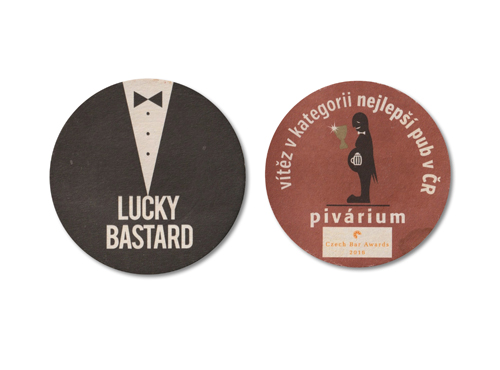





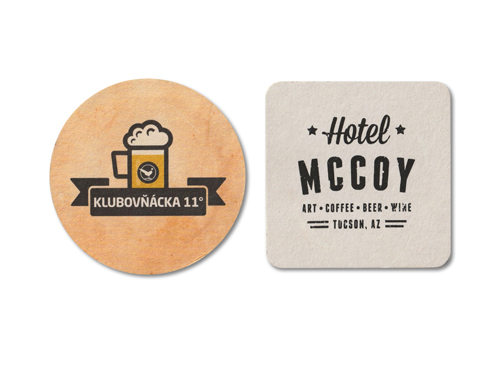
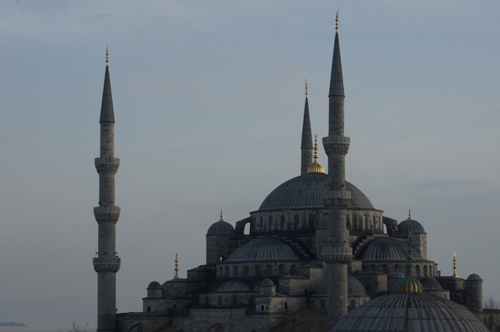
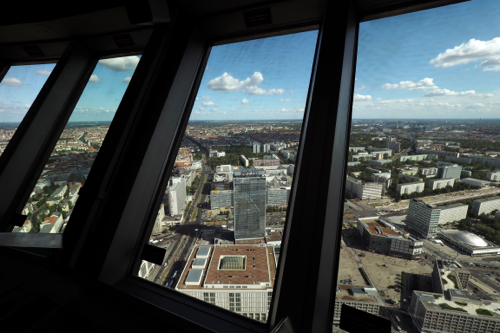
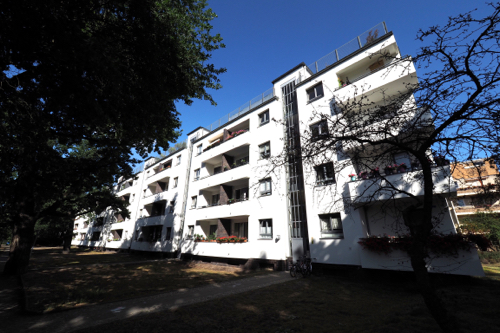
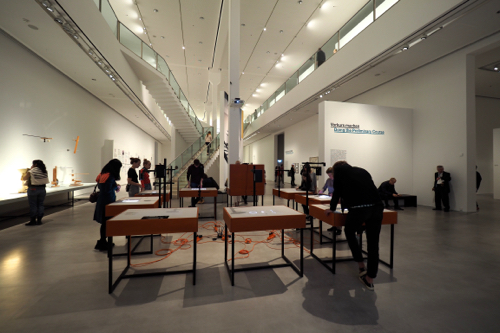
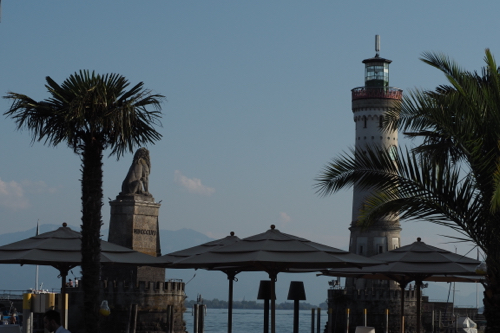
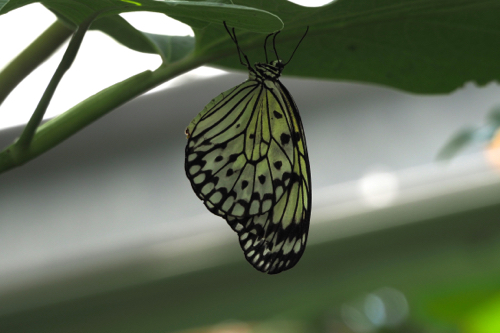



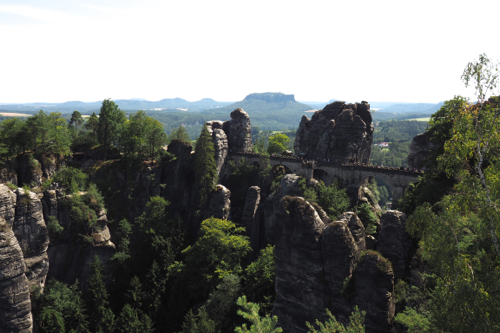
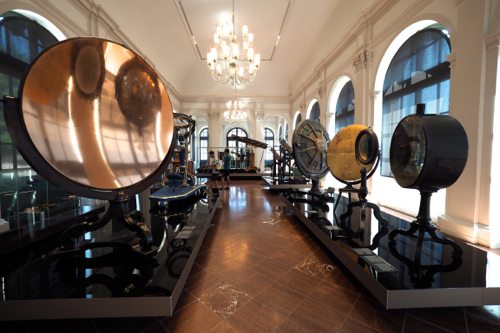

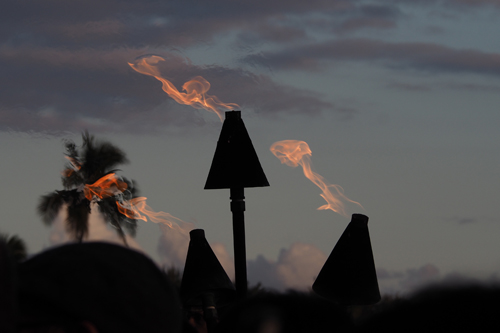
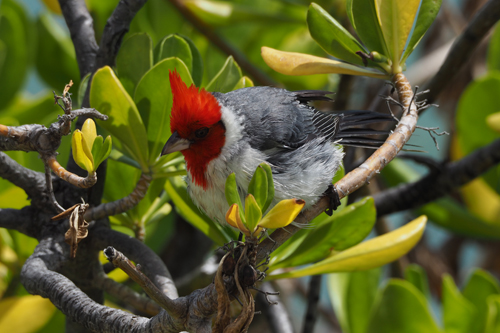
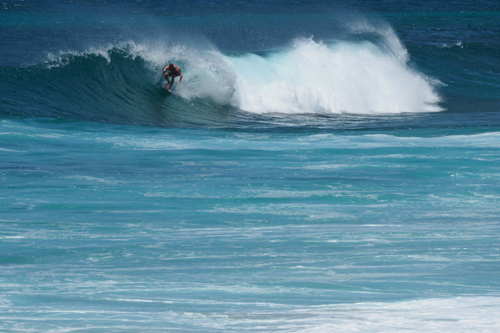
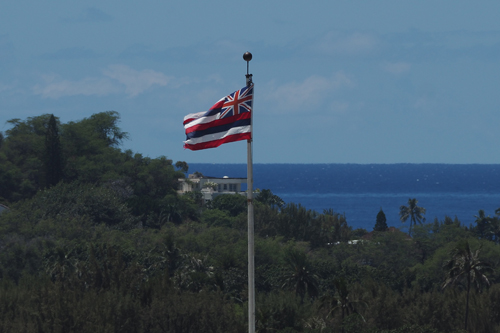

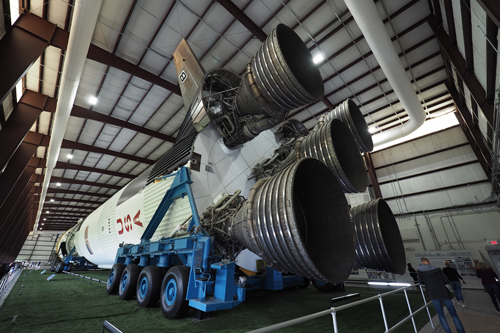
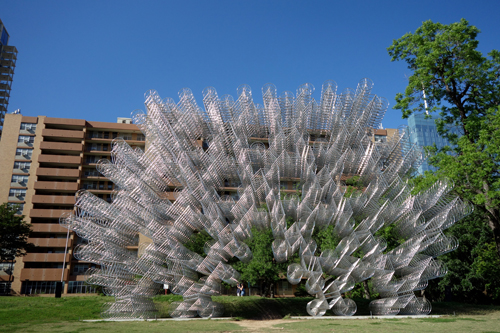
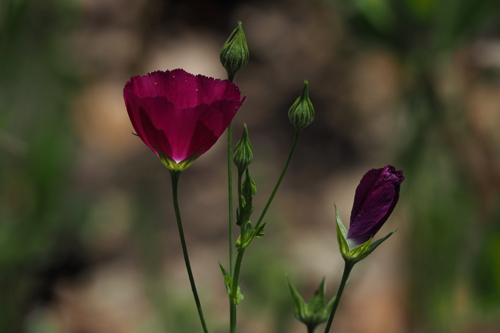
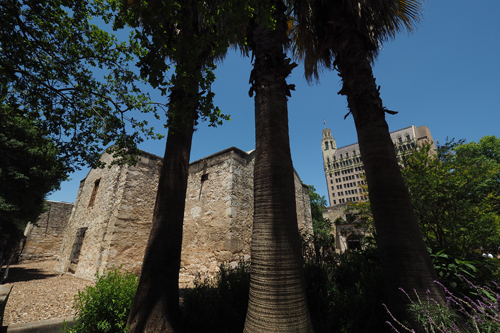
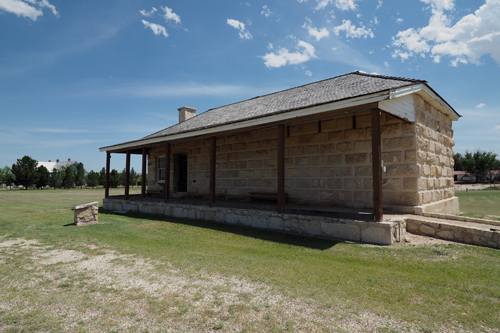
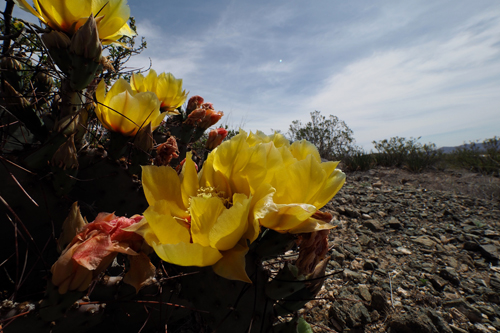
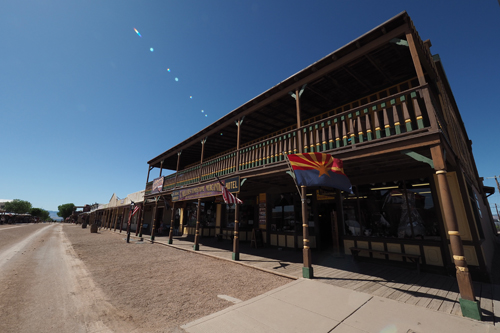
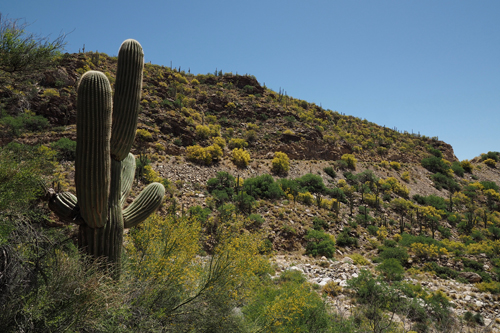
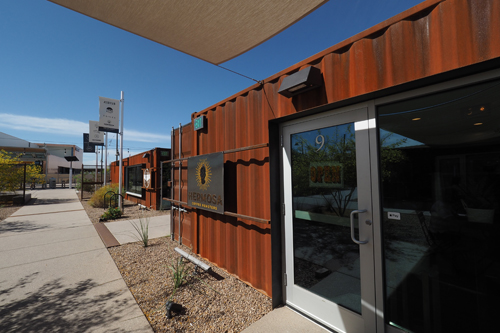
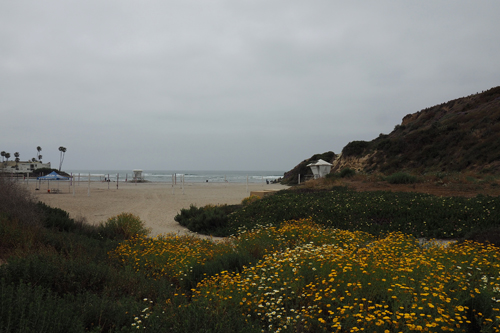
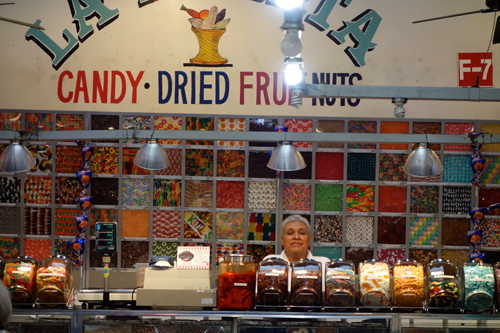
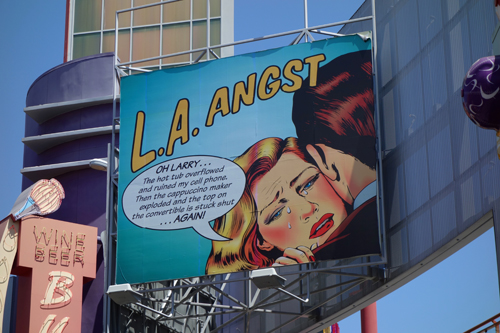














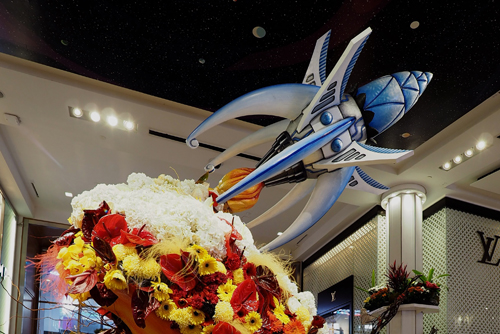
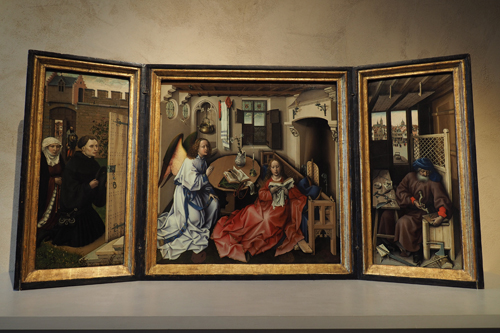
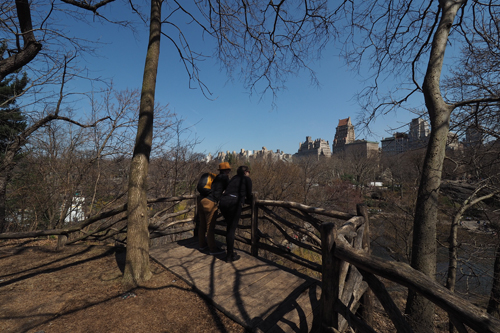
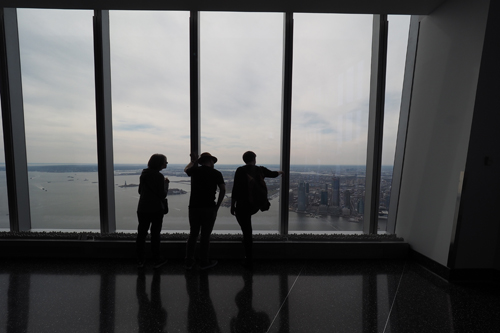










Bushfire relief drive: Take 2.
Wednesday, March 31st, 2021After the devastating bushfires in south eastern Australia last summer, we decided to visit some of the worst effected areas.
Not to gawk but to spend some money and give back something to these communities that had been so badly hit.
That was not to be.
Once the seriousness of the COVID-19 pandemic became obvious and we went into lockdown, no travel, even so close to home, was possible.
Now, twelve months on, we decided to deliver on our promise and make our bushfire relief drive.
March 16, 2021. Melbourne to Lakes Entrance.
Our first day away consisted of a rather longish drive to Lakes Entrance. This was broken with a coffee and lunch stop in Yarragon. This is a cute little ‘Coffee break town’ that’s just off the Princes Highway and set up for passing tourists, truckies and also the Gippsland Railway.
On the first night of our break, at the suggestion of the motel owner, we ate at the Kalimna Hotel.
We needed to get a taxi there as it was a long walk, up a steep road, heading out of town.
This was a basic pub with a stunning view over the lakes.
Having become used to getting craft beer in many pubs these days, it was rather disappointing to discover that Great Northern Bitter was the most exciting brew they had on offer.
Believe me, this is certainly not a beer to write home about.
Stony Creek Trestle Bridge (1916)
March 17, 2021. Lakes Entrance.
As we had two nights in Lakes Entrance, and the weather was fine, we decided to make this a day of walking.
Our adventure took us from the Log Crossing Picnic Area in Colquhuon State Forest to the Limestone Box Forest Track, then Armstrongs Track to the Gippsland Lakes Discovery Trail and Tramway Walk.
The aftermath of the bushfires was evident, but the regrowth had done a wonderful job of restoring the bush tracks.
The original Mississippi Creek Tramway was developed in the 1900s and used until the 1930s. It transported granite from a quarry in the area to the developing Lakes Entrance township, fishing port and tourist area.
In 1870 the town was originally called Cunninghame but became Lakes Entrance in 1915.
After the walk we then drove along the Uncles and Old Colquhoun Roads to the Stony Creek Trestle Bridge.
Built in 1916, when the rail line from Melbourne to Bairnsdale was extended to Orbost, it is the largest bridge of its type in Victoria and listed as an historic site.
Built from ironbark and grey box timber, it is 247 metres long and 20 metres high and was in service for over 60 years. Badly damaged by bushfires in 1980 it was finally closed in 1987.
That night we had dinner at Sodafish, a floating seafood restaurant right in the middle of the harbour’s fishing fleet.
Again, this restaurant was booked at the suggestion of the owner’s of the Sandbar Motel.
Suburu on Wheelers Hill (699m) McKillops Road
March 18, 2021. Lakes Entrance to Marlo via McKillops Road (C611).
Today we decided to drive one of the; ‘Most hazardous and dangerous roads in Australia’ as it has been described by the website ‘dangerousroads.org’
The McKillops Road drive is 80km along a gravel road, in the Snowy River National Park. Yes there are many narrow sections, with blind corners but it certainly isn’t the hairiest drive I have ever encountered.
We would have thought twice about taking the road if it had been wet, as there are many tight corners with steep drop-offs to the side.
The AWD capabilities of the Subaru were very useful and at no time did I feel as though we were in any danger.
In fact our drive from Beacon, in New York State, back to Harlem, in New York City in November 2017 was the the worst drive I have ever done – and that was on a sealed road in the rain.
A man made feature of the McKillop’s Road drive, is McKillop’s Bridge. This is situated about half way along the C611, near the confluence of the Snowy and Deddick Rivers.
The bridge is made of welded-steel trusses with reinforced-concrete piers and was built over the Snowy River between 1931 and 1936.
It is 255 metres in length and originally constructed as a stock bridge.
From there we drove to Marlo where we were booked into the Marlo Hotel.
There isn’t much in Marlo and the hotel seems to be the go-to destination, as that night the restaurant was full.
Kookaburra at the Mallacoota Coastal Reserve Caravan Park
March 19, 2021. Marlo to Mallacoota via Cape Conran.
The clouds have increased and the skies are much darker. This is all part of a large weather front that is developing over NSW.
Today we were driving the rather short distance from Marlo to Mallacoota, with a diversion to Cape Conran.
We had a good breakfast and excellent coffee in Marlo at the Snowy River Tackle and Cafe complex. There you can get live worms for your bait and Avo on Toast for your breakfast.
Just out of Marlo we could see, what is described on the map as, the mouth of the Snowy River.
This now appears to be blocked by a sand bar, as no exit was visible.
Steph, Ev’s partner, has spent many holidays camping at Cape Conran with her family, so we decided to visit it ourselves.
The bushfires have certainly left their mark here and blackened trees can be seen almost reaching down to the water’s edge.
We then drove on to Mallacoota and, by total coincidence, checked into Bruce’s Waterside Units.
We were staying in the Captain’s Cabin, which was in fact an old school house.
The rain was threatening and we decided to go for an afternoon walk to discover the area before it got any worse.
Mallacoota is a haven for campers and fishermen, with much of the town taken up with caravan parks. Many of the campsites had boats parked next to the tents, vans and motorhomes.
It was in the Mallacoota Coastal Reserve Caravan Park that we discovers some wonderful Australian wildlife, in the form of two Kookaburras and a Koala.
They were every cooperative and I managed to get some good snaps.
That night we ate at the Mallacoota Hotel, which was just around the corner from the Captain’s Cabin.
The food was typically pub fair with a huge variety and well presented. I managed to find Balter XPA on tap. This was also available at Lakes Entrance and Marlo and a great improvement on the Great Northern Bitter that I had to endure on the first night.
Bushfire aftermath at Genoa Creek Falls
March 20, 2021. Mallacoota.
The rain has come.
The severe weather warnings for NSW have now moved south over the border into Victoria.
With the intermittent showers we decided that the best thing was to go for a drive around the Mallacoota area.
We discovered the Genoa River at Gipsy point on the Mallacoota Inlet.
This is an area for kayaks, fishermen and bird watchers.
No sooner had we arrived than a flock of swallows swooped down to where we were standing.
I believe that the swallow is one of the hardest birds to photograph. No sooner do they land than they take off again.
Here it was different, they seemed to want to be photographed. Maybe they had missed the tourists over the last twelve months or they were just tired and needed a break.
Anyway, they did settle long enough for me to change to a telephoto lens and get some shots.
It was then off to Genoa Creek Falls, an area that seems to have been particularly hard hit by the fires.
The falls are just off the Princes Highway, on a small, easy to miss track. After you park the car, there is a short walk and a flight of timber stairs leading down to the falls.
As a result of the bushfires, the stairs have been rebuilt and are now brand new. The bush around the falls is dotted with blackened tree trunks, fallen logs and singed bark hanging from the branches.
I imagine during the winter, or after heavy rain the falls might be rather spectacular, but the day we visited there was barely a trickle running over the large red boulders.
After our drive we returned to the Captain’s Cabin and then it started to pour down.
That night we returned to the Mallacoota Hotel for dinner, as we hadn’t managed to find anywhere better and the beer, wine and food was ok.
March 21, 2021. Mallacoota to Mirboo North.
There was more heavy rain overnight and now it has spread to Melbourne. It looks like a wet drive to Mirboo North.
The main reason we were visiting Mirboo North was to break the long return trip to Melbourne. It was a bonus that within this very small community is situated the Grand Ridge Brewery.
Being established in 1989, Grand Ridge is one of the oldest craft breweries in Australia.
As the website ‘craftypint.com’ puts it:
“The elder statesman of the Victorian microbrewery scene, Grand Ridge began offering full-flavoured ales to a nation of lager drinkers more than 20 years ago.”
This was an old article in Craftypint and in fact the brewery has been in operation since 1989. They therefore have been challenging beer drinker’s taste buds for over 30 years.
I had booked at the restaurant, not knowing how busy it might be on a Sunday night.
I shouldn’t have bothered.
There were only about six tables in a space that could hold far more. We went to the bar for a pre-dinner drink and that was even less crowded, with only on other person drinking there.
We had been told that the restaurant had recently been taken over by new owners. It had previously been run by the management of Grand Ridge. I think that the loss of trade during the pandemic and the lack of available staff since, had forced them to rationalise their business model.
The food was excellent as was the service and the beer that I started with. This was a West City Neipa 7.5%. The ‘Neipa’ stands for New England IPA and it is now made in the Grand Ridge Brewery.
Like so many good brew pubs, Grand Ridge provides their drinkers with a wide range beer styles. There were three sets of taps, each serving six brews.
We were staying at the aptly named 1st T Motel, which was right next to the Mirboo North Golf Club.
According to Google Maps it was meant to be a 20 minute walk from our motel to the brewery, but we took a short cut through the golf course, and did it in ten.
March 22, 2021. Mirboo North to Melbourne.
The motel provided us with breakfast, of sorts. This consisted of four slices of plain white bread with sachets of Vegemite, jam, honey and peanut butter. There was also a choice of Cornflakes, Rice Bubbles or Special K. Which meant that our entire breakfast was totally lacking in any nutritional value.
After a breakfast like that we needed a strong coffee, before the relatively short drive back to Melbourne.
We found that at Lamezleighs Cafe and Bar, which was on the main street of Mirboo North. The coffee was good but they did charge us for a mug when we had only ordered, and been served, a cup.
In a way I guess we were still putting money back into the community, but not the way we had intended.
The weather was still threatening but the rain did hold off.
It was a strange adventure, initiated by the devastating bushfires of 2020, postponed by the world wide COVID-19 pandemic and then interrupted by the ‘One-in-100-years’ floods in NSW.
It does seem that we are lurching from one disaster to another.
Posted in Comment, Photography, Travel | No Comments »